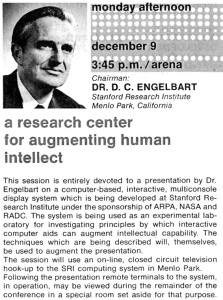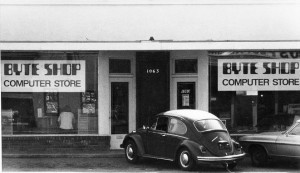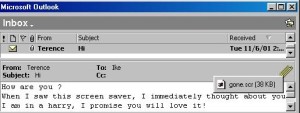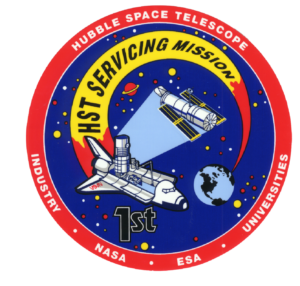Douglas Englebart Demos the “Mouse”
Douglas Englebart and his team of researchers present a 90-minute public technology demonstration including such innovations as hypertext, video conferencing, and most famously, the computer mouse. This is the first public demonstration of the mouse, witnessed by about 1,000 computer professionals in attendance.
The Byte Shop Opens
Paul Terrell opens the Byte Shop in Mountain View, California, one of the first retail computer stores in the world. Besides that important distinction, Paul Terrell and the Byte Shop are most famously known for ordering the first 50 computers from Steve Jobs and Steve Wozniak’s fledgling Apple Computer company in 1976. As the story goes, the Steves initially intended the Apple I to be a kit, where buyers would solder together the chips onto the circuit board themselves. Terrell requested that instead they deliver fully-assembled computers as he was having trouble selling other kits to people who couldn’t put them together themselves. By insisting on a fully-assembled computer (even though the Apple I still lacked a case, power supply, and keyboard), Terrell helped shape the future direction of Apple and the entire personal computer industry. The Apple II was the first personal computer to be manufactured and sold as completely assembled units, making them accessible to the average user, thus igniting the personal computer revolution.
RIAA Sues Napster
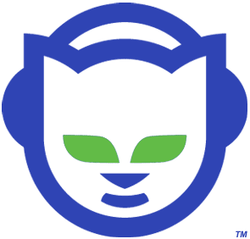
The Recording Industry Association of America sues the peer-to-peer file sharing service Napster alleging copyright infringement for allowing users to download copyrighted music for free. The RIAA would eventually win injunctions against Napster forcing the service to suspend operations and eventually file bankruptcy. In the end the RIAA and its members would settle with Napster’s financial backers for hundreds of millions of dollars.
While the case was ostensibly about copyright violations, the bigger picture for the RIAA was also about control. The recording industry in general was caught with its pants down when it came to digital music and the Internet. They were not prepared for the sudden popularity of digital music downloads that Napster introduced and were not ready with a model to monetize downloaded music. This lawsuit, along with future lawsuits targeting individuals, was intended to squash the practice of downloading music as much as it was to recover compensation. However, the practice of downloading music could not be stopped as other non-centralized peer-to-peer file sharing services popped up in place of Napster. Faced with the ever increasing tide of users downloading music for free, eventually the recording industry reluctantly got on board with commercialized music downloading services like the iTunes Music Store. However they still lost a great deal of control over the marketplace. Leveraging the huge success of iTunes, Apple enforced a strict pricing policy much to the consternation of the record companies. By creating a de-facto pricing standard for downloaded music, Apple became the major powerhouse in the music industry. The runaway success of iTunes also had the effect of Apple displacing established retail and radio outlets as the gatekeepers of popular music. As well, the ability for artists independent of record companies to distribute their music and gain followings greatly disrupted the control the RIAA and its members had over the music industry. While the RIAA may have taken down Napster, what Napster started completely changed the direction of both the music and technology industries.
Apple Sues over QuickTime
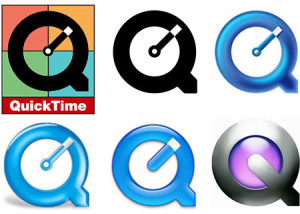
Apple sues the San Francisco Canyon Company alleging they helped Intel and Microsoft steal code developed under contract for QuickTime for Windows.
Apple first released QuickTime for the Macintosh in December 1991 and then contracted the San Francisco Canyon Company to port QuickTime to Windows in 1992. Microsoft’s competing Video for Windows technology was not as advanced as Apple’s QuickTime, even when it came out a year after QuickTime. In 1993, Intel hired the San Francisco Canyon Company to help them optimize their own video technology. Later in 1993 Intel and Microsoft combined their efforts to improve Video for Windows, releasing a version that was significantly improved and roughly matched the quality of QuickTime. Apple discovered that code developed by the San Francisco Canyon Company for QuickTime was also present in the improved version of Video for Windows and sued the San Francisco Canyon Company in 1994. In 1995 Apple expanded the lawsuit to include Intel and Microsoft, claiming that the companies knowingly used the San Francisco Canyon Company to help them steal the QuickTime code. It was later revealed that Apple was threatening Microsoft with a multi-billion dollar lawsuit, that was famously settled by Steve Jobs and Bill Gates in 1997. This settlement is now believed to have helped Apple survive long enough to transform themselves in the 2000’s, ushering in the mobile device revolution and The New World of Technology.
Initial ARPANet Completed
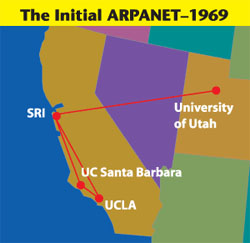
The University of Utah becomes the fourth node on the ARPANet*. This completed the planned original nodes on the experimental network that would eventually evolve into what we now know as the Internet.
*Some sources claim this date as December 1st. I can not yet find a definitive source.
Goner Worm Hits Internet
Disguised as a screen saver and spread through an infected user’s Microsoft Outlook e-mail software, the Goner worm spreads through the Internet at a pace second only to the Love Bug virus the previous year. Goner was estimated to cause about $80 million dollars in damage.
Hubble Space Telescope Servicing Begins
The Space Shuttle Endeavour captures the Hubble Space Telescope to begin the first servicing mission of the flawed satellite. Over the next 5 days a variety of repairs and upgrades are completed, most notably the installation of the Corrective Optics Space Telescope Axial Replacement (COSTAR) and the Wide Field and Planetary Camera 2 (WFPC2) modules that together were able to compensate for the flaw in the Hubble’s main mirror. Once these corrections were made, the Hubble Space Telescope was, after 3 years, finally able to fulfill its promise of delivering detailed imagery that was not possible with Earth-based telescopes.
Segway Unveiled
Inventor Dean Kamen unveils the Segway self-balancing, battery-powered vehicle on the TV show Good Morning America. The Segway uses computers and motors in its base to keep itself upright while the user is riding it. Users shift their weight to control the Segway. While not considered a commercial success, the Segway has definitely become a familiar icon of personal transportation.
Apple Releases QuickTime
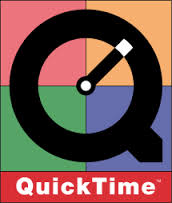
Apple releases version 1.0 of QuickTime, a multimedia extension for playing color video, transforming the capabilities of personal computers. Before QuickTime, only specialized computers could play color video. QuickTime allowed anyone with a personal computer to do so and it changed the history of computing – in more ways than one. It was the patent infringement battle over QuickTime that led to the now-famous truce between Steve Jobs and Bill Gates in 1997 that helped Apple survive long enough to transform itself in the 2000’s.
Business.com is Big Business
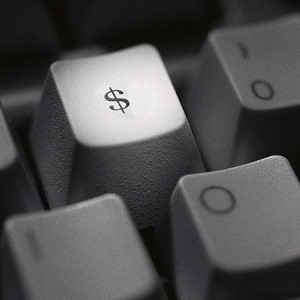
The domain name business.com sells for $7.5 million. At the time, it was the most expensive domain name sold in history and still ranks in the top 15 all-time most expensive domain names. Domain name investor Marc Ostrofsky had purchased the domain in the mid 90’s for $150,000.
In 2007 the company that owned Business.com and created a ad network website around the domain sold for $345 million to Yellow Pages publisher R.H. Donnelly. Marc Ostrofsky reportedly owned a stake in this company as well.
If only I had the foresight in the 90’s to buy up simple domain names when they were all available! I was in the right position to do so, but I just didn’t think of doing it until years later when they had already been registered and started selling for crazy amounts of money. However, I did help my parents sell a domain they registered in the 90’s for $20,000. Looking back now, I probably could have gotten a lot more for it.

